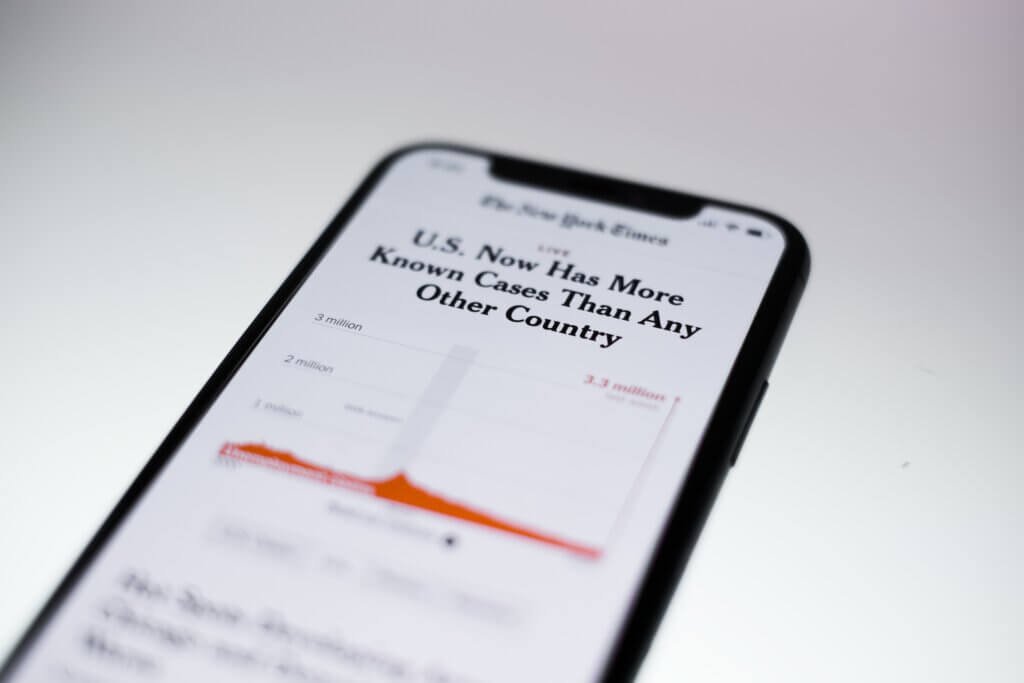You know that feeling when you pour your heart and soul into a blog post, only to have it go unnoticed in the vast sea of content online? It can be incredibly frustrating. But fear not, because there is a powerful secret weapon at your disposal that can skyrocket your blog’s visibility and drive insane amounts of traffic to your site – killer blog headlines. In this article, we’re going to unlock the secrets to crafting captivating headlines that grab your readers’ attention, pique their curiosity, and leave them with no choice but to click and explore your amazing content. Get ready to take your blog to the next level with headline mastery!

Understanding the Importance of Blog Headlines
Capturing Attention with a Compelling Headline
The headline of your blog is the very first thing readers see, and it plays a crucial role in capturing their attention. A compelling headline has the power to make readers stop scrolling and click on your blog post. It should evoke curiosity, intrigue, and a desire to learn more. By choosing the right words and crafting a captivating headline, you can hook your audience from the start and entice them to read your entire blog post.
Driving Traffic with a Click-Worthy Headline
One of the main goals of writing a blog post is to drive traffic to your website. A click-worthy headline is essential in achieving this goal. When your headline stands out among a sea of other blog posts on search engine result pages or social media feeds, it increases the chances of attracting readers to click through and read your content. A catchy and attention-grabbing headline is a powerful tool for driving more traffic to your blog.
Improving SEO Ranking with Relevant Headlines
In the vast world of the internet, visibility is key. An important aspect of improving your blog’s visibility is optimizing your headlines for search engine optimization (SEO). By incorporating relevant keywords into your headlines, you increase the likelihood of your blog post appearing in search engine results when people are looking for information related to your topic. Well-crafted headlines that align with popular search terms can significantly improve your blog’s SEO ranking and increase organic traffic to your site.
Researching Keywords and Analyzing Competitors
Identifying Target Keywords for Your Blog
Before crafting your headline, it’s important to conduct keyword research to identify the target keywords for your blog. These are the words or phrases that your audience is likely to use when searching for information related to your blog topic. By understanding the keywords that resonate with your target audience, you can optimize your headline to align with their search intent and improve the chances of your blog post being discovered by the right people.
Analyzing Competitor Headlines and Strategies
Analyzing your competitors’ headlines can provide valuable insights into their strategies and help you identify opportunities for improvement. Look for patterns in their headlines, such as common keywords or structures, and assess their effectiveness. By understanding what works for your competitors, you can adapt and refine your own headline strategies to stand out and attract more readers.
Using Keyword Research Tools to Your Advantage
Keyword research tools can be incredibly helpful in finding relevant keywords and analyzing their popularity and competitiveness. Tools like Google Keyword Planner, SEMrush, and Moz Keyword Explorer provide valuable data on search volumes, keyword difficulty, and related keywords. These insights can guide you in choosing the most effective target keywords for your headline and optimizing your content for better search engine visibility.

Crafting Headlines that Stand Out
Keeping it Short and Attention-Grabbing
In today’s fast-paced digital world, attention spans are shorter than ever. To capture your audience’s attention, it’s essential to keep your headlines short and snappy. Aim for headlines that are concise and impactful, conveying the essence of your blog post in just a few words. By cutting out unnecessary words and focusing on the core message, you make your headline more attention-grabbing and increase the likelihood of readers clicking through to read your blog.
Using Numbers and Statistics for Impact
Numbers have a way of capturing attention and adding credibility to your headline. Whether it’s a listicle or a how-to guide, incorporating numbers can make your headline more compelling. Numbers provide a clear structure and give readers a sense of what to expect from your blog post. Additionally, using statistics in your headline can make it more persuasive and highlight the value and relevance of the information you’re offering.
Using Power Words to Evoke Emotions
Power words are emotionally charged words that evoke strong feelings and reactions in readers. By incorporating power words into your headline, you can tap into your audience’s emotions and create a connection that compels them to click and read your blog post. Words like “ultimate,” “effortless,” “life-changing,” or “unbelievable” can add impact and intrigue to your headline, making it more enticing and irresistible to your target audience.
Including Relevant Keywords and Phrases
Implementing Your Target Keywords Naturally
While it’s important to include your target keywords in your headline, it’s equally important to do so in a natural and organic way. Keyword stuffing or forcing keywords into your headline can make it appear spammy and unappealing to readers. Instead, focus on seamlessly integrating your target keywords into your headline, ensuring that it flows naturally and makes sense to both search engines and your audience.
Adding Related Phrases for Improved SEO
In addition to your target keywords, including related phrases in your headline can enhance your SEO efforts. These phrases are semantically related to your main keywords and provide additional context to search engines. By incorporating these related phrases, you can broaden the reach of your headline and make it more relevant to a wider range of search queries, ultimately improving your chances of ranking higher in search engine results.
Utilizing Long-Tail Keywords for Specific Audience Targeting
Long-tail keywords are longer and more specific keyword phrases that have lower search volumes but higher conversion rates. They are an excellent way to target niche audiences and capture users who are further along in the buying process. Including long-tail keywords in your headline can attract a specific audience that is more likely to engage with your content and take desired actions. By tailoring your headline to a specific audience, you can increase the effectiveness of your blog post and achieve better results.

Understanding the Different Headline Types
The How-To Headline for Problem Solving
How-to headlines are a staple in the world of blogging as they offer practical solutions to common problems. They promise readers a step-by-step guide or actionable advice to tackle a particular issue. How-to headlines are effective because they tap into readers’ desire for knowledge and provide a clear benefit from reading the blog post. By offering valuable insights and solutions, how-to headlines can attract readers who are actively seeking answers and increase engagement on your blog.
The Listicle Headline for Organization
Listicle headlines have gained immense popularity in recent years due to their organized and easily digestible format. These headlines promise a specific number of items or tips within a blog post and are often accompanied by numbers in the headline itself. Listicle headlines appeal to readers’ desire for structured information and provide a clear expectation of what they will find in the blog post. By organizing your content into a list format and using a listicle headline, you can improve readability and encourage readers to explore your entire blog post.
The Question Headline for Curiosity
Question headlines pique readers’ curiosity and invite them to seek answers within your blog post. By posing a thought-provoking question in your headline, you engage readers on an intellectual level and compel them to click through to find the answers. Question headlines are effective because they create a sense of curiosity and tap into readers’ desire for knowledge or confirmation. By asking relevant and intriguing questions, you can spark interest and encourage readers to engage with your content.
Writing Persuasive and Actionable Headlines
Appealing to Readers’ Emotions and Desires
Emotions play a significant role in decision-making, and appealing to readers’ emotions can make your headlines more persuasive and compelling. By understanding the desires, fears, and aspirations of your target audience, you can tailor your headlines to evoke the right emotions. Whether it’s happiness, excitement, or relief, crafting headlines that align with readers’ emotions can create a powerful connection and motivate them to take action.
Including Powerful Action Verbs and Calls-to-Action
To make your headlines more actionable and persuasive, incorporate powerful action verbs and calls-to-action. Action verbs give your headline a sense of urgency and encourage readers to take the desired action. Words like “discover,” “learn,” “transform,” or “achieve” can add impact and fuel readers’ motivation to click through and engage with your blog post. Additionally, including a clear call-to-action in your headline, such as “Get Started Now” or “Unlock the Secrets,” can further drive readers to take immediate action.
Creating a Sense of Urgency and FOMO
Creating a sense of urgency and fear of missing out (FOMO) in your headlines can be highly effective in driving readers to click and engage with your blog post. The fear of missing out on valuable information or limited-time opportunities can be a powerful motivator for readers to take action. By using time-limited words like “now,” “today,” or “limited offer,” or by emphasizing scarcity or exclusivity in your headline, you can create a sense of urgency and FOMO that encourages readers to act quickly.

Optimizing Headlines for SEO
Including Target Keywords in the Beginning
To maximize your SEO efforts, it’s important to include your target keywords in the beginning of your headline. Search engines pay more attention to the beginning of a headline, so including your keywords upfront increases the chances of your blog post being ranked higher in search results. By placing your target keywords strategically, you can optimize your headline for both readers and search engines, improving your SEO ranking and visibility.
Utilizing Meta Titles and Descriptions
Meta titles and descriptions are crucial elements for optimizing your blog post’s visibility in search engine results. The meta title is the headline that appears in search engine listings, while the meta description is a brief summary of your blog post. By optimizing your meta title and description with your target keywords, you can improve the chances of your blog post being clicked and increase its SEO ranking. Crafting compelling meta titles and descriptions that accurately describe the content can entice readers to click through and engage with your blog post.
Optimizing Headline Length and Structure
Headline length and structure have a significant impact on your blog post’s visibility in search engine results. It’s important to keep your headlines concise and within the recommended character limits for search engine listings. While there is no one-size-fits-all answer, aim for headlines that are neither too short nor too long. Additionally, structure your headlines in a way that makes them easy to read and understand. Breaking up the headline into logical sections with clear and concise wording can make it more scannable for both readers and search engines.
A/B Testing and Analyzing Headline Performance
Conducting A/B Tests to Compare Headlines
A/B testing is a valuable technique for comparing the performance of different headlines and optimizing your blog post’s effectiveness. By creating multiple variations of your headline and testing them against each other, you can gather data on which headline resonates best with your target audience. A/B testing allows you to make data-driven decisions and refine your headlines for optimal engagement and click-through rates.
Analyzing Metrics to Measure Headline Success
To measure the success of your headlines, it’s important to analyze relevant metrics such as click-through rates, bounce rates, and time spent on page. By monitoring these metrics, you can gain insights into how well your headlines are attracting readers and engaging them with your content. Analyzing these metrics allows you to identify patterns, trends, and areas for improvement, helping you create more effective headlines in the future.
Making Data-Driven Decisions for Future Optimization
Data-driven decision-making is crucial when it comes to optimizing your blog post headlines. By analyzing the results of A/B tests and monitoring key metrics, you can identify opportunities for improvement and make informed decisions for future optimization. Whether it’s adjusting your headline structure, refining your use of keywords, or experimenting with different headline types, data-driven insights can guide your headline optimization strategies and drive better results.

Avoiding Common Headline Mistakes
Steering Clear of Clickbait and False Promises
Clickbait headlines may initially attract readers, but they often result in disappointment and damage to your brand’s reputation. Avoid resorting to clickbait tactics or making false promises in your headlines. Instead, focus on providing valuable and accurate information that meets readers’ expectations. By delivering on your headline’s promise and demonstrating credibility, you build trust with your audience and encourage them to continue engaging with your content.
Avoiding Overused and Cliché Phrases
In a sea of generic headlines, it’s important to stand out and avoid overused and cliché phrases. Overused phrases like “ultimate guide” or “secret tips” can make your headline blend in with the crowd and diminish its impact. Instead, strive for originality and creativity in your headline. Think outside the box, use unique and compelling language, and offer a fresh perspective to capture readers’ attention and make your blog post memorable.
Ensuring Headlines Match the Actual Content
Nothing disappoints readers more than clicking on a headline that promises one thing and delivers something completely different. It’s essential to ensure that your headlines accurately reflect the content of your blog post. Misleading or deceptive headlines erode trust and credibility among your audience, ultimately leading to high bounce rates and low engagement. By aligning your headline with the actual content, you set clear expectations and create a positive user experience that encourages readers to stay on your site and explore further.
Crafting Headlines for Different Social Media Platforms
Understanding the Unique Requirements of Each Platform
Different social media platforms have their own unique requirements and limitations when it comes to crafting effective headlines. Understanding these requirements is key to optimizing your headline for maximum impact on each platform. For example, Twitter has a limited character count, while Facebook allows for longer headlines. Tailoring your headlines to fit the specific needs and characteristics of each platform can increase visibility, engagement, and click-through rates.
Tailoring Headlines for Twitter, Facebook, and LinkedIn
Twitter is known for its brevity, so it’s important to keep your headlines concise and attention-grabbing within the limited character count. Using eye-catching keywords and hashtags can make your headline stand out in users’ crowded feeds. On the other hand, Facebook allows for longer headlines, giving you more room to provide additional context and compelling information. LinkedIn, as a professional networking platform, may require a more formal and business-oriented tone in your headlines. Tailoring your headlines to suit the vibe and requirements of each platform can enhance your social media presence and drive more traffic to your blog.
Utilizing Hashtags and Emoji Appropriately
Hashtags and emojis can be powerful tools for enhancing your social media headlines. Adding relevant and trending hashtags to your headline can broaden its reach and improve discoverability. Emojis, when used appropriately, can add visual appeal and convey emotions that resonate with your target audience. However, it’s important to use them strategically and sparingly. Overusing hashtags or emojis can make your headline appear unprofessional or cluttered, so make sure to strike the right balance for maximum impact.
In conclusion, crafting killer blog headlines that drive traffic requires a combination of art and science. Understanding the importance of compelling headlines, conducting keyword research, and analyzing competitors’ strategies are essential steps in the process. By creating attention-grabbing headlines, incorporating relevant keywords, and exploring different headline types, you can optimize your blog’s visibility, engage your audience, and ultimately drive more traffic to your website. Remember to write persuasive and actionable headlines, optimize for SEO, analyze performance through A/B testing, avoid common headline mistakes, and tailor your headlines for different social media platforms. With these strategies in your toolkit, you’ll be well on your way to writing killer blog headlines that captivate, attract, and convert readers.


